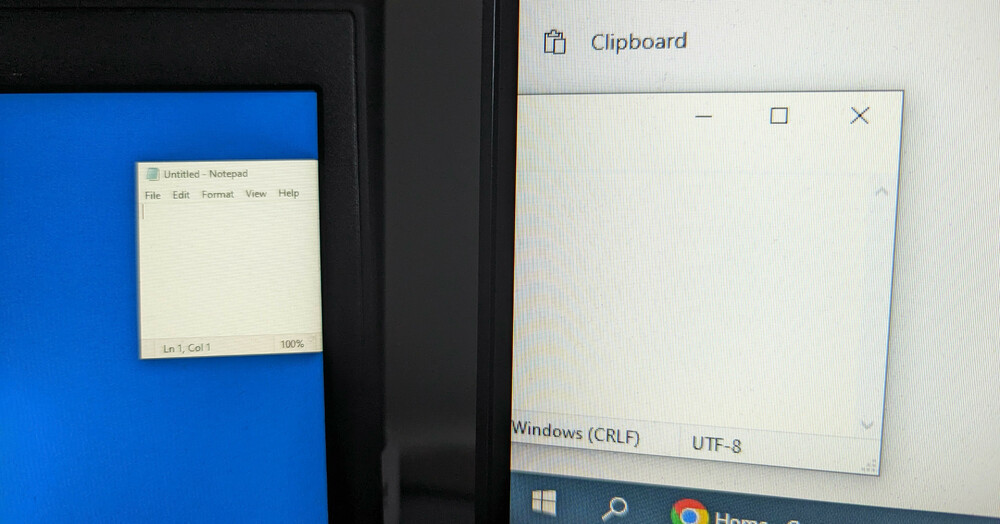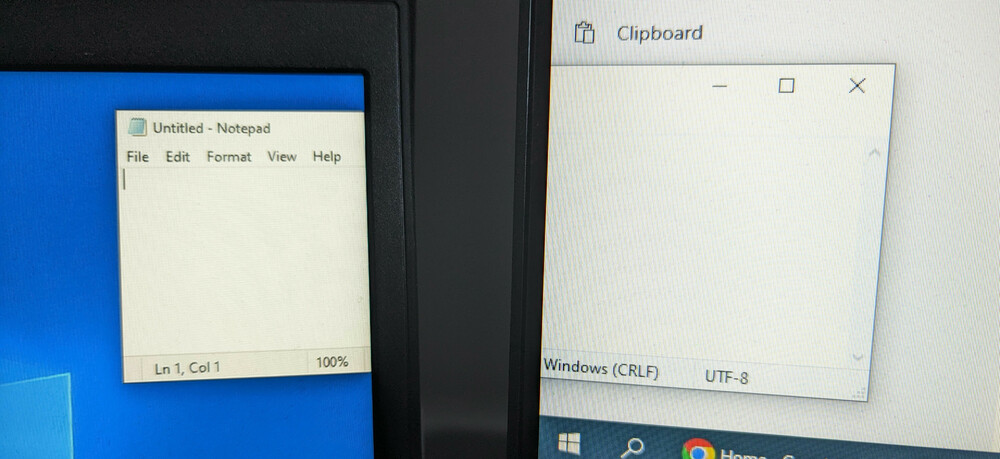

Scott-S6
Members-
Posts
558 -
Joined
-
Last visited
Content Type
Profiles
Forums
Events
Everything posted by Scott-S6
-
That early access is problematic, for sure, especially in the video game review sphere. Release day is huge for people looking for reviews in order to decide whether to purchase. To have reviews out on release day (or even release week) absolutely requires early access. This means that reviewers are unable to see the true release state of the game (because they don't have the day one patch) and they have to be very careful with criticism because loss of early access will substantially damage them. Not the easiest thing to fix though. The only real solution would be for the review community to decide en-mass that their integrity isn't for sale and they'll self impose an embargo for two weeks post release. The reduced hype at that point would absolutely reduce their views though... I don't see it happening. If publishers just stopped giving early access then we get a race for fast reviews with lots of half-baked nonsense being put out. Personally, I just avoid reviews generally and especially anywhere close to release.
-
Or perhaps he reads just as much as those of you averaging 2-3 posts a day but posts less, which would mean that he's perfectly well placed to judge the negative behaviour of a vocal minority? He's absolutely correct and trying to deflect that by pointing out his post count is a very poor counter argument. It would be equally valid (i.e. not at all) to say that you aren't qualified to comment on the community since you've only been here since 2019 or because you have provided zero community answers.
-
Obviously, it's going to be two weeks.
-
That you feel there is a wound at all is the problem. A little introspection might be called for, waiting for release shouldn't be wounding... BTW, to extend your analogy, a salt rub is quite invigorating (when you don't have a wound).
-
Hah, yes. It's been more than ten years, a few more months barely register. I'm not only waiting for the EA but for the EA build to be added to Stable. (I really don't understand why so many people use OpenBeta, DCS has more than enough bugs without adding to that. I guess it's the same impatience we see displayed in this thread.)
-
Your memory is faulty, I'm afraid. There was never a promise to get the module prior to early access as a reward for pre-ordering. I'm not even sure how the logistics of that would work. It is certainly not something that has been offered on other modules. BTW your rant against people being condescending and self delusional while you alone are the logical and rational one is quite ironic considering that your argument is that you remember something being a particular way and therefore everyone else telling you that you're incorrect must be wrong.
-
And RB said they'd have front seat keybinds for that handful of switches.
-
I think you're completely wrong on this one. A massive portion of the community doesn't use the forum at all and may not even be aware that there was a strike eagle to preorder. "Full release" is likely 2+ years away.
-
One note, you should do the X and Y separately, not combine them as you did. Extra steps you don't need to do. Modern displays mostly have pixels that are pretty square 32" Dx = 2560 pixels / 27.89 inches = 91.8 pixels per inch 32" Dy = 1440 / 15.69 = 91.8 42" Dx = 3840 / 37.05 = 103.6 42" Dy = 2160 / 20.84 = 103.6 As you can see with modern displays you can just look at one axis, whichever is more convenient (remember to take the measurement and pixels for the physical dimension if you have a mix of orientations). I generally use the X for no particular reason. We can see from these numbers that the these resolutions on these displays aren't a good match (they could be on other screens, for example if the smaller displays were 29" then these resolutions would be pretty good). Since both are at their highest resolution we need to reduce the resolution of the 42" display because it has the higher density. The ideal would be 3401x1913 (the dimensions of the screen X the target density 91.8). If the display has a res close to that then bingo. If not then drop the screen with the higher density to it's next lowest resolution and calculate again. For those that don't like math, just drag a window so it's partially on both screens. If the window is bigger on one of the screens then your pixel densities don't match. Lower the res on the screen where the window is smaller. Repeat the experiment and again reduce the resolution on the screen where the window is smaller. Whichever combo of resolutions results in the window being as close to the same size as possible on the two screens is the answer. Couple of examples below (laptop and random monitor but works to make the point). You can see with the native resolution they're a terrible match, the window is totally different in size. In the other pic the window is kinda close to the same size, not perfect but as good as these particular two displays can do.
-
Okay, so in your initial state, the X axis was 40.8 pixels per cm on the large display and the small display was 36.7. That doesn't seem like much but it will definitely distort a display stretched across them. The relative physical size does not match the relative pixel size (remember that the game is just drawing pixels, it doesn't understand the physical size of the monitors). If you want to visualize this better just drag a window between the monitors - you can see that it's not the same physical size even though it's the same number of pixels. With your new resolutions the large screen is 27.2 and the small is 27.4. Drastically closer and pretty close to perfect. A scale drawing of the monitors and a pixel map of the monitors would show (almost) the same relative size of the monitors and if you drag a window between them it's physical size will barely change. That's what we want in order to display a picture (or game display port) across them and have it look right. The pixel density of the X axis is obtained by dividing the X resolution by the X dimension i.e. 3840pixels / 94.1cm = 40.8pixels/cm. You should also check the Y although it's only really significant if the monitors are different aspect ratios and/or orientations. Does that make more sense now? For anyone reading this later - you don't need to worry about this for displays that are going to have things like MFDs on them, only for displays that are going to have one "picture" (like the main game display) stretched across them. If you've got one display for the main game and one or more displays for MFDs, radar, etc then you can ignore this.
-
Measure the X and Y of the two displays (the display area) and I'll show you why it works.
-
That would probably get him pretty close.
-
You don't need to put them anywhere. You need to select resolutions for the displays that such that all displays have pixel density as close as possible to each other. If your smaller monitors were half the size then you'd want them to have half the resolution (so same number of pixels per inch) so that a stretched display would look right. If your displays aren't in the same orientation then remember to calculate the X and Y based on the orientation you're using.
-
Divide the X resolution by the monitor's width. Do the same with the Y. (I.e. pixels per inch/cm) You want to find resolutions that give you the closest possible values for each monitor.
-
That's cool, I'll have to go try it with the viper. The SE isn't going to be landing on carriers though.
-
I haven't flown SA in a few months but not AFAIK.
-
So the ones that the SE's hook isn't for? And that the viper's similar hook doesn't work on? What makes you think the SE's hook will be any different? And even if it does work, what's the point in being able to land once while destroying the landing gear? (and being unable to use the catapult regardless) Having a hook for use with runway emergency arrestor systems does not make an aircraft carrier capable. In DCS it's nothing but eye candy for those people that just look at the plane from the external view.
-
Why is that exciting? We still don't have any runways with emergency arrestor systems.
-
The Win Wing FSSB implementation is really odd and not at all like the actual stick. There's a center zone where it can move with little resistance then you hit a wall and it becomes force sensing with no movement. On the real stick it's rigid at centre, displacing very slightly as you add more force. I don't like WW's implementation at all although I do like FSSB sticks (I have a force sensing side stick and gimbaled center stick). I also dislike that WW haven't built the forward rake needed for a properly mounted side stick into their stick - they don't even offer a suitable adaptor or mount, leaving you to figure out how to add that forward rake to your mount. (You can see that rake in my pic above which is a TM with custom tailpipe on an RS base) With a gimballed stick you would not typically have arm support. What you do want very much is an extension and a base designed for use with an extension (i.e. with reduced travel) together with a suitable mounting system. This means you get the same displacement of the grip but with less rotation of the grip through that arc - it is the rotation (especially to the rear) that can make desktop sticks uncomfortable.
-
Have you posted this in the wrong section? You'd probably do better in the home cockpit section.
- 1 reply
-
- 3
-

-

-
You need to look at the available resolutions and calculate what the pixel density is for each - i.e. they must all have the same pixels per inch. Then it'll work the way that you want. Remember that the game has no idea what the physical size of the monitors is.
-
The A10A had a different stick and throttle. As part of the upgrade to MFDs, digital stores management and TGP it needed a controls update so they used the stick grip from the F16 and the inboard throttle grip from the F15.
-
I genuinely see people conflate "release" and "EA release" then get upset when the module is very much incomplete. TBF, it doesn't help when the EA release is completely undercooked but still, expectations need to be tempered accordingly.
-
Because modules languish in EA for so long some people seem to forget what that means...
-
Overinflated expectations based on delusion isn't positivity. It'll be out when it's out. It's been ten years, a bit more is nothing.


